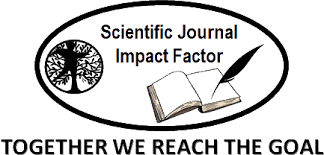The Analysis of The Literary Devices: Metaphor Through Some Examples of Literary Works
DOI:
https://doi.org/10.62480/tjpch.2024.vol33.pp1-4Keywords:
Metaphor, simile, John SteinbeckAbstract
A language is made up of in a special way, that special way creates literature. In addition to Dash ‘s definition, in Oxford Dictionary, language is defined as ― the system of communication in speech and writing that is used by people of a particular country or areal. Therefore, it is understood that while people communicate with one another, they use language and, in their language, they also use the elements of literature. As the term literature is very broad and quite subjective it is possible to suggest numerous definitions for it. The important thing here is that language and literature cannot be assumed as something totally independent from each other. Thus, in this language-literature combination, there are several literary devices or elements such as metaphor, simile, irony, personification and so on. Thanks to these devices, people can easily convey their messages to the others. Literary devices not only make the message meaningful but also decode the hidden feelings. Metaphor and simile are commonly used literary devices in communication and literature. Hence, they are quite useful and favorable in delivering the desired feeling or meaning. In this study, metaphors and similes as commonly used literary devices are going to be analyzed and taught through John Steinbeck ‘s selected novels of “Mice and Men” and “The Grapes of Wrath”.
References
Conventional, (n.d.). In Online Oxford English Dictionary. Retrieved
from:https://www.lexico.com/en/definition/conventional
Creative, (n.d.). In Merriam Webster Dictionary. Retrieved from: https://www.merriamwebster.com/dictionary/creative
Jackendoff, R., & Aaron, D. (1991). More than cool reason: A field guide to poetic metaphor by
George Lakoff, Mark Turner. Language, 67(2), 320-338.
Steinbeck, J. (1962). The Nobel Prize in Literature 1962. Retrieved March
,2019,from:https://www.nobelprize.org/prizes/literature/1962/steinbeck/25229-john-steinbeckbanquet-speech-1962
Steinbeck, J. (1994). Of mice and men. London: Penguin Books.
Steinbeck, J. (2002). East of Eden. New York: Viking Press.
Steinbeck, J., & DeMott, R. (2000). The grapes of wrath. London: Penguin.
The University of Michigan. (2017). Homeric metaphor. Retrieved May 28, 2018.
Downloads
Published
Issue
Section
License

This work is licensed under a Creative Commons Attribution-NonCommercial 4.0 International License.
User Rights
Under the Creative Commons Attribution-NonCommercial 4.0 International (CC-BY-NC), the author (s) and users are free to share (copy, distribute and transmit the contribution).
Rights of Authors
Authors retain the following rights:
1. Copyright and other proprietary rights relating to the article, such as patent rights,
2. the right to use the substance of the article in future works, including lectures and books,
3. the right to reproduce the article for own purposes, provided the copies are not offered for sale,
4. the right to self-archive the article.












